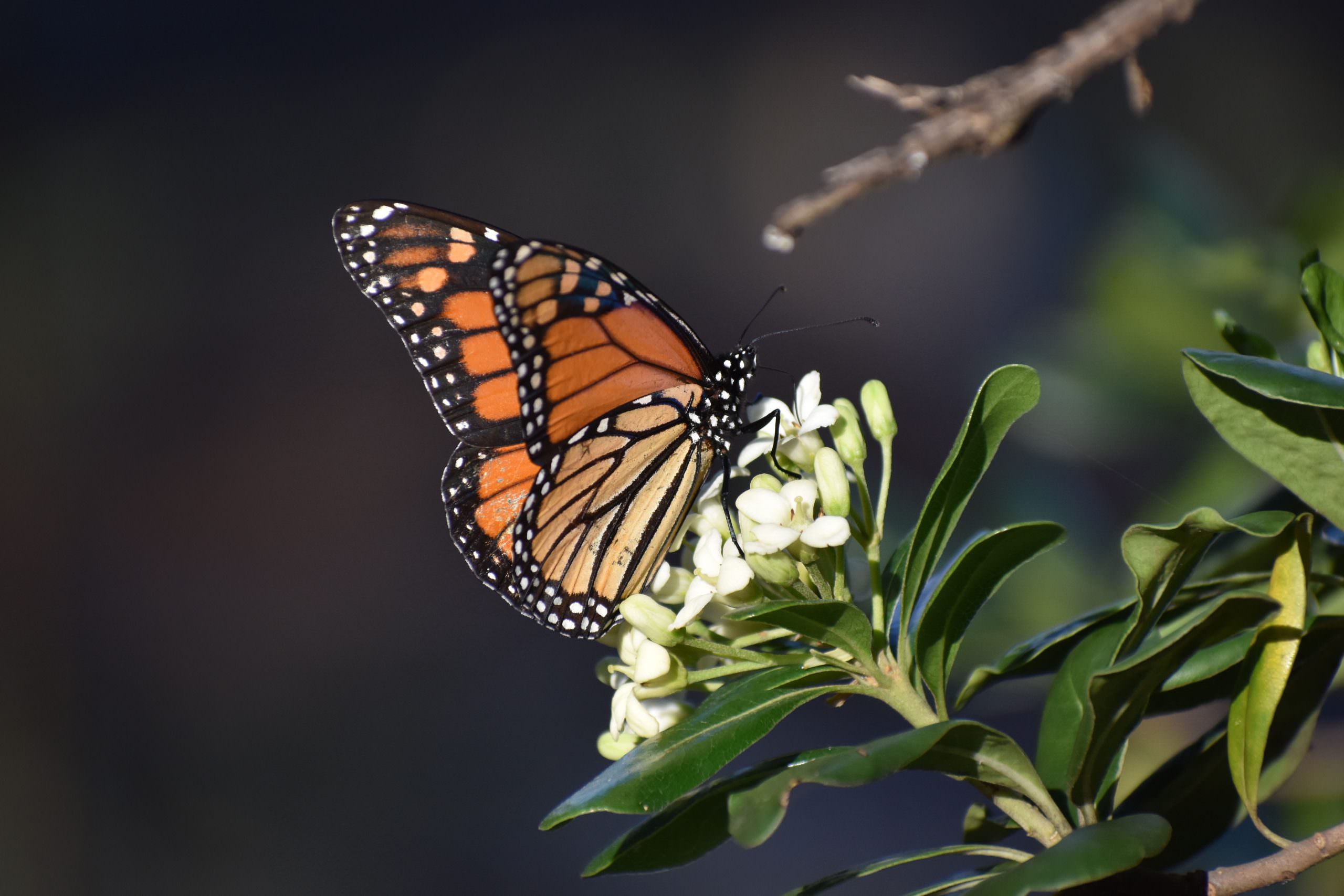Some novel ways to attract and support butterflies in the garden.
Who doesn’t love butterflies? They’re lovely to look at and help pollinate our fruit trees and gardens. They also play a vital role in our ecosystem, serving as food for other insects and small animals. Additionally, the caterpillars are nature’s weed eaters. What’s not to like?
And we’re fortunate in Nevada. According to Kevin Burls, executive director of Reno nonprofit Nevada Bugs & Butterflies, our state’s many distinctive ecosystems mean that we have more than 200 species here, placing Nevada among the top 10 states for butterfly diversity.
We may have plenty of diversity, but that doesn’t mean we have large numbers. The plight of the monarch, one of the most beautiful species to populate our area, has been well documented. According to the Xerces Society for invertebrate conservation, last year’s monarch population dropped 85 percent from the previous year and has declined 99.4 percent from 40 years ago.
Even more worrisome, at least 20 species are disappearing faster than the monarch, according to University of Nevada, Reno ecologist Matt Forister.
“There’s not one single cause for the butterfly’s decline,” Forister says. “It’s a combination of factors, among them loss of habitat, urbanization, herbicide and pesticide use, and climate change.”
The magnitude of the problem may seem daunting, but we can take small steps, right now, this summer, in our own yards and gardens, to attract and enhance our butterfly population.
Welcome weeds
If you really like butterflies and want to ensure their survival, you’d better rethink your relationship with your old summer foe: weeds.
Why? Because each butterfly species relies on specific host plants in order to propagate, and, in some cases, those plants happen to be those we consider weedy or less than desirable. In fact, while an adult butterfly is happy to sip nectar from just about any flower, it will only lay its eggs on a select few (or sometimes just one) type of host plant.
For example, the monarch needs milkweed to survive. It’s the only plant monarch caterpillars can eat. No milkweed, no monarchs.
The Melissa blue likes to hang around Verdi, where it counts on finding weedy alfalfa on the roadside or in people’s yards to propagate.
The western pygmy blue is common in our area, but you’ll have to look closely to spot it. It’s the smallest butterfly in North America and one of the smallest in the world. You’ll most likely see it around Russian thistle (tumbleweed), where it lays its eggs.
You’ll surely spot the ubiquitous painted lady, a migratory species capable of flying nearly 30 miles per hour and traveling up to 100 miles a day. It’s an extreme generalist in terms of plants it can eat and breed on, which makes it a real survivalist. Its favorite? Thistles.
We’ve all admired the showy western tiger swallowtail as it’s glided by. It’s one of several species that needs cottonwood trees or willows for their caterpillars to feast on. Unfortunately, these less-popular trees often are removed by homeowners.
“Spare that willow or cottonwood tree. Let some weeds grow,” Forister says. “Caterpillars eat weedy plants, so it’s a great argument for not cleaning up every weed in your garden. Messy edges to gardens can be really good for butterflies.”
Hand-y solutions
One of the most important practices you can do, Forister says, is to keep your yard herbicide and pesticide free. If you must remove weeds, do it manually, not chemically. The same goes for unwelcome bugs.
If you see a bug, pick it off. Yank that weed out by hand. Use hose spray to knock aphids off your plants. It’s better for all pollinators — and your own health.
If you must use chemicals, read the labels carefully and apply sparingly, Forister cautions. Home gardeners tend to greatly overuse these toxic chemicals. A shocking statistic from the Environmental Protection Agency indicates that the average lawn gets up to 10 times as much pesticide per acre as farmland.
Plant a variety of flowers, vegetables, or fruit trees to provide a steady source of blooms from spring to fall.
Use United States Department of Agriculture Certified Organic seeds, plants, and bulbs so butterflies aren’t ingesting pesticides. Avoid planting vegetation that’s been treated with systemic insecticides, particularly neonicotinoids. Do your homework before buying your plants! Research growers to see whether their plants are neonic free, or ask the nursery staff.
Some butterflies love our vegetable plants. Among them is the common cabbage white, which lays its eggs on plants in the broccoli, cabbage, and cauliflower family. Remove the caterpillars during growing season, but leave the plants in the ground after harvest so butterflies can breed.
Finally, plant native species. That’s what our local butterflies love best! Pesticide-free varieties are available at the Nevada Division of Forestry’s Washoe State Tree Nursery in Carson City. It even sells milkweed.
“Just planting a half-dozen native plants or one or two shrubs is a small thing,” Burls says, “that can really make a big difference.”
Even as you read this, writer Barbara Twitchell is in her yard, counting monarchs on her newly planted milkweed.
Nevada Division of Forestry’s Washoe State Tree Nursery
885 Eastlake Blvd., Carson City
775-849-0213 • Forestry.nv.gov


